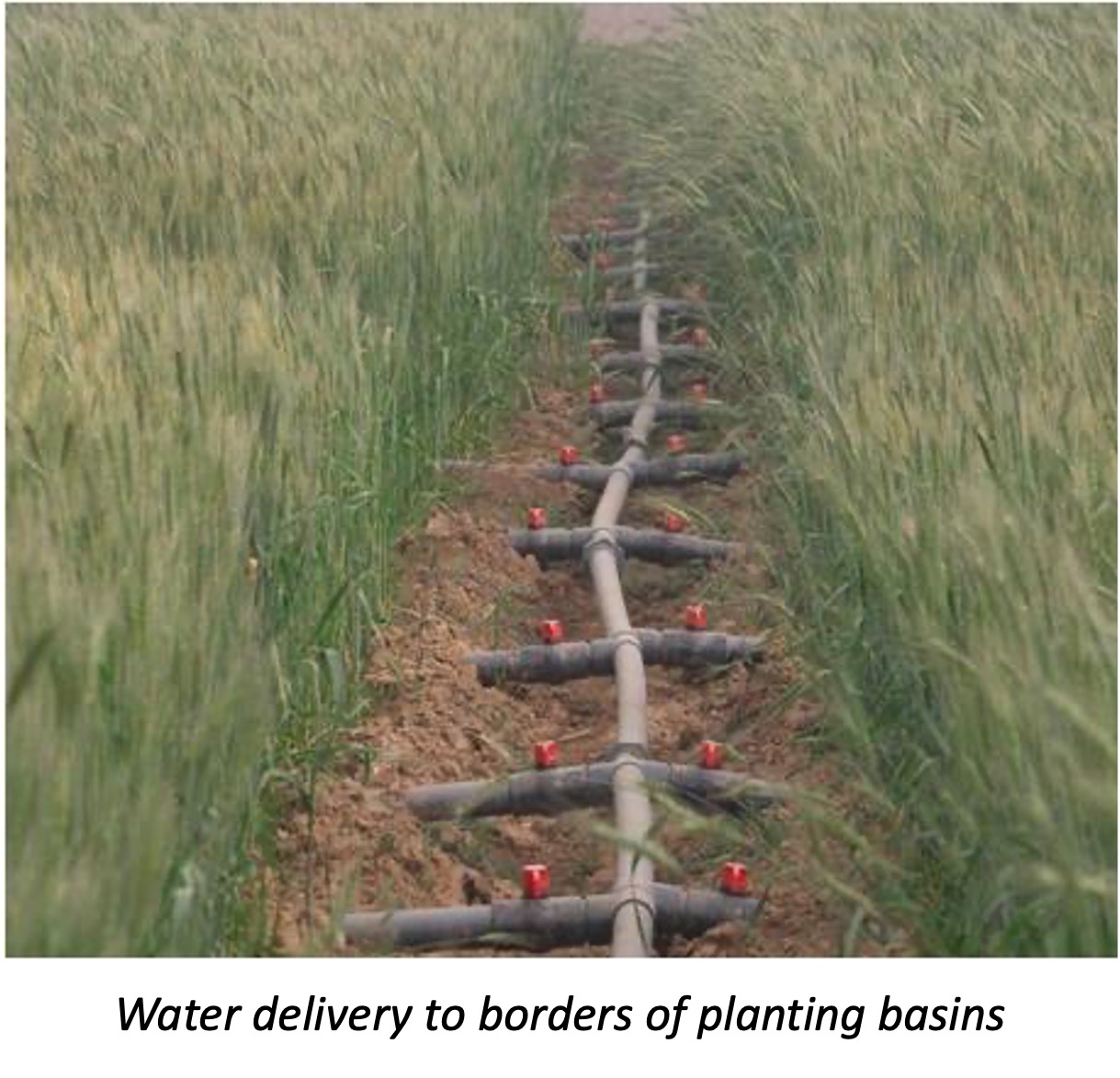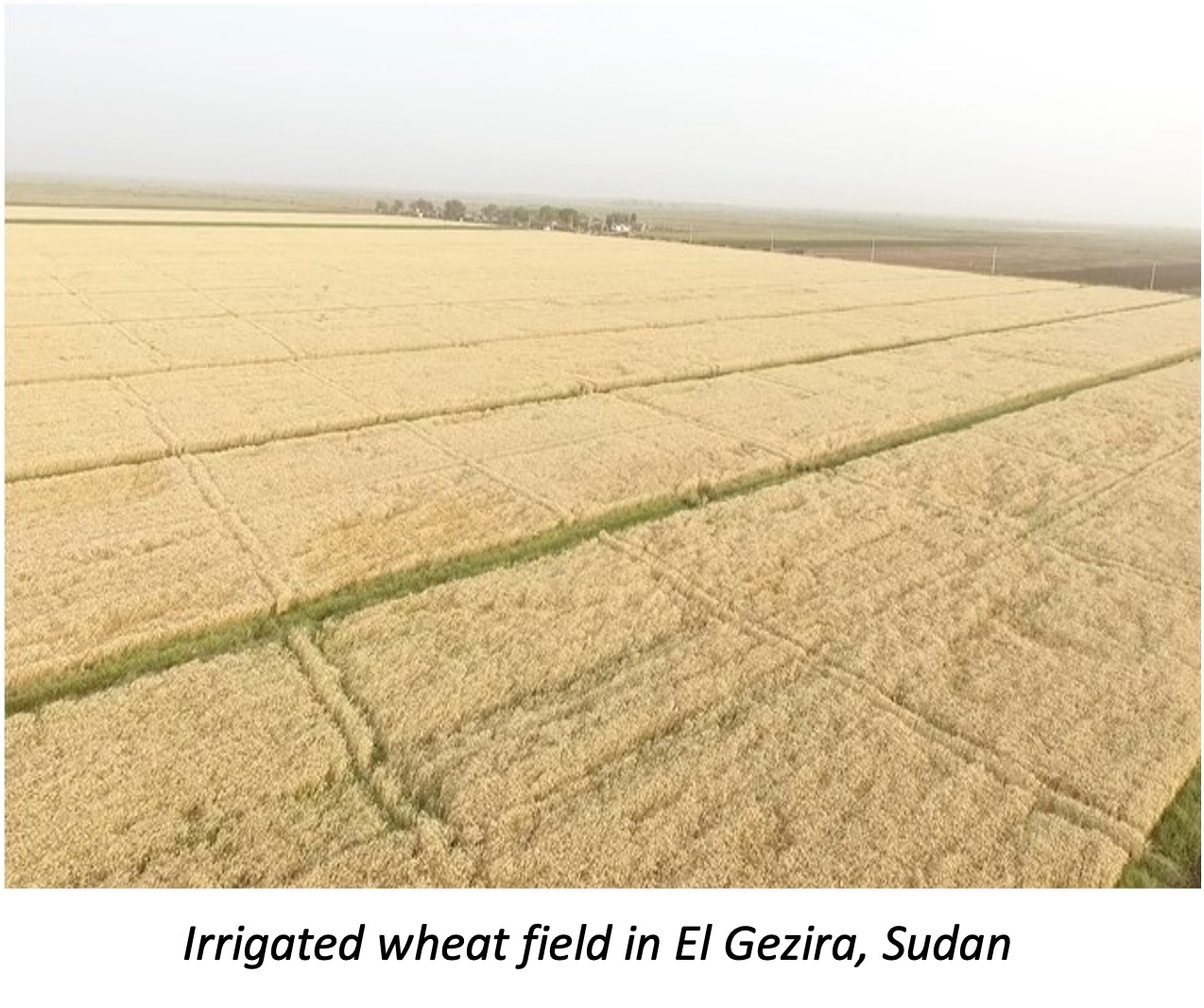Expanded Production of Irrigated Wheat
Summary
Grain yields of wheat strongly decrease when the crop is exposed to high diurnal temperatures at any point during its growth cycle and this occurs frequently in the hot rainy seasons when wheat is traditionally cultivated by farmers across the dry lowlands of Sub-Saharan Africa. Heat events in this time of year have become more regular and more intense because of global climate change, whereby exacerbating the risk of yield losses and crop failure for farmers. Growing wheat during the cool season in African dryland belts, referred to as winter production, avoids that the crop gets exposed to the adverse effects of heat stress. The cooler weather during this time of year however makes that limited amounts of precipitation are received and consequently irrigation systems need to be in place for wheat crops to grown up to their full potential. Investments for water lifting and drip feed infrastructure are profitable in the short term because winter production ensures stable high levels of wheat grain yield and quality. This way the innovation allows to build a food value chain that is resilient to climate shocks and to expand the cultivation of wheat across non-traditional growing areas of drylands. The success of irrigated wheat production in several breadbasket regions of Africa is advancing self-sufficiency and reducing expensive importation.
About the Solution
Farmers in Africa traditionally cultivate wheat during the wet season because adequate rainfall is received without investment in irrigation. However, high mean diurnal temperatures of 33-36°C and extreme heat events with temperatures above 45°C may occur during the growing season that acutely reduce the performance of wheat, even for improved varieties bred to withstand heat stress. By cultivating wheat in the cooler, dry season, the risk of heat-related yield loss is reduced as temperature spikes above 35°C are uncommon. To compensate the lack of rainfall during the dry season, wheat crops must be provided between 300 to 500 mm of water through irrigation. The advantageous growing conditions under irrigation also lower the risks of pests and diseases. Irrigated winter production of wheat also enables farmers to practice crop rotation, particularly with legumes that serve to protect soil quality.
There is very large potential for irrigated winter production of wheat in the dry sub-humid and semi-arid belts across the lowlands of Western Africa, Horn of Africa and Southern Africa since these regions face high temperatures and regular heatwaves during summer season. Wheat farmers in the Eastern African low-altitude and mid-altitude highlands where the hot rainy season sporadically experiences above normal temperatures and heat events can also eliminate weather-related risks by cultivating the crop during the dry cool time of year. Strategic planning and deployment of irrigated wheat production in the cool seasons of Africa’s breadbasket areas is of great importance to achieve wheat self-sufficiency under rapidly warming conditions and more frequent heat.
Winter production of wheat in Africa can be performed with spring bread varieties if more than 450 mm of water in supplied through irrigation and rainfall, whereas spring durum cultivars need to be used when the supply of water is 250 to 450 mm. Heat-tolerant wheat varieties can be used in years when elevated temperatures and heat waves are predicted to occur during the cold season, while common spring wheat cultivars may be grown under normal weather conditions. The type of irrigation that farmers will put in place for winter production of wheat depends on the available water sources and topographic position of fields. In broad terms, they have a choice between passive gravity-based systems that divert rivers via canals and dams, or active levitation systems that draw from surface and underground reservoirs through water pumping systems. Overhead water delivery requires higher water pressures, while furrows and floods may be supplied through gravitational flow.
The window for growing wheat during the dry season of African drylands may be rather narrow since cooler temperatures last only 2-3 months and because of delays in cultivation and harvesting before and following the rainy season. In that case, it is necessary to use early maturing wheat varieties with production cycles of 90 to 100 days. Before tillage and sowing can take place the land has to be irrigated, which can either be done by opening a dam that collected water during the rainy season or by pumping it from nearby rivers. Seed must be planted into moist beds using water from dams or nearby rivers. Soils are ploughed and levelled by hand, animal or tractor at which stage farmyard manure or other organic resources should also be incorporated. Seed is planted in lines to allow effective control of weeds and more even distribution of water.
Commercialization
Commercially available
Solution Images
Institutions



